
International Journal of Naval Architecture and Ocean Engineering
Scope & Guideline
Navigating the forefront of oceanic research and technology.
Introduction
Aims and Scopes
- Ship Design and Optimization:
The journal covers methodologies for optimizing ship hull forms, structures, and systems to improve performance, efficiency, and safety, using computational techniques such as CFD and numerical simulations. - Marine Engineering and Systems:
Research in this area includes the design and analysis of propulsion systems, energy efficiency measures, and the integration of renewable energy solutions in marine vessels. - Hydrodynamics and Fluid-Structure Interaction:
The journal publishes studies on the interactions between water flows and marine structures, including the effects of waves, currents, and underwater explosions on ship performance. - Autonomous and Unmanned Systems:
This scope focuses on the development of technologies for autonomous vessels, including navigation, collision avoidance, and path planning using advanced algorithms and machine learning. - Safety and Risk Assessment:
The journal emphasizes the importance of safety in maritime operations, presenting research on risk assessment, accident prevention, and the resilience of marine structures. - Sustainability and Environmental Impact:
Research addressing the environmental impacts of marine operations, including pollutant emissions, energy consumption, and the use of alternative fuels in shipping.
Trending and Emerging
- Artificial Intelligence and Machine Learning Applications:
There is an increasing trend toward integrating AI and machine learning techniques for optimizing ship design, enhancing navigation systems, and improving predictive maintenance practices. - Digital Twin and Simulation Technologies:
The use of digital twin models for real-time monitoring and simulation of ship performance is on the rise, indicating a shift towards more adaptive and data-driven approaches in naval architecture. - Sustainable and Green Technologies:
Emerging research is focusing on sustainable practices, including the use of alternative fuels and energy-efficient designs, reflecting the maritime industry's push towards reducing its environmental footprint. - Autonomous Maritime Systems:
The rapid development of unmanned surface vehicles and autonomous navigation systems is becoming a central theme, emphasizing the need for innovative solutions in maritime safety and efficiency. - Advanced Materials and Structural Health Monitoring:
Research on new materials for ship construction and real-time structural health monitoring systems is gaining importance, driven by the need for enhanced durability and performance in challenging marine environments.
Declining or Waning
- Traditional Shipbuilding Techniques:
Research related to conventional shipbuilding practices has decreased as more emphasis is placed on modern methodologies and technologies, such as digital twin modeling and automated systems. - Basic Hydrodynamic Theory:
While fundamental hydrodynamic studies are still relevant, there has been a noticeable shift towards more applied and complex scenarios, such as real-time simulations and advanced computational methods. - Static Structural Analysis:
The focus on static analysis of ship structures has waned in favor of dynamic assessments that consider operational conditions and environmental interactions, reflecting a trend toward more holistic evaluations.
Similar Journals

Brodogradnja
Navigating the Future of Shipbuilding and Marine TechnologyBrodogradnja is a distinguished open-access journal dedicated to the fields of Mechanical Engineering and Naval Architecture, published by the University of Zagreb's Faculty of Mechanical Engineering & Naval Architecture. Since its launch, the journal has been at the forefront of disseminating valuable research and advancements in engineering design, marine technology, and shipbuilding practices, contributing significantly to both academic literature and industrial applications. With an impressive Q1 ranking in Mechanical Engineering and a Q2 ranking in Ocean Engineering for 2023, it stands as a pivotal resource for researchers, professionals, and students alike. Moreover, the journal's commitment to open access since 2005 ensures that cutting-edge research is accessible to a global audience, facilitating collaboration and knowledge-sharing among experts in the field. Based in Croatia, Brodogradnja continues to uphold the legacy of high-quality technical scholarship and innovation, making it an essential platform for advancing marine engineering and related disciplines.

MARINE STRUCTURES
Unveiling Cutting-Edge Solutions for Ocean ChallengesMARINE STRUCTURES, published by Elsevier Science Ltd, is a premier scholarly journal that has established itself as an essential platform for the dissemination of cutting-edge research in the fields of Marine Engineering, Ocean Engineering, and Materials Science. With an impressive H-index reflecting its substantial citation impact, and boasting a Q1 ranking across several categories including Materials Science and Mechanical Engineering as of 2023, this journal is recognized globally for its contributions to advancing knowledge and innovation in marine structures. The journal covers a wide range of topics, from the design and analysis of marine structures to the latest technologies and methodologies in ocean engineering, making it invaluable for researchers, professionals, and students alike. As the journal continues to publish high-quality articles that explore contemporary challenges and opportunities within the marine domain, it serves as a catalyst for collaboration and knowledge exchange among academia and industry. Researchers are encouraged to submit their original works and benefit from the rigorous peer-review process that ensures the quality and reliability of published content. MARINE STRUCTURES is not currently an open access journal, providing a subscription-based model that facilitates access to its authoritative body of knowledge.

Ocean Systems Engineering-An International Journal
Pioneering Research for a Sustainable Ocean FutureOcean Systems Engineering - An International Journal, published by TECHNO-PRESS, is a pivotal platform for the dissemination of cutting-edge research in the fields of Automotive Engineering, Mechanical Engineering, Ocean Engineering, and Water Science and Technology. With its ISSN 2093-6702 and E-ISSN 2093-677X, the journal serves as a key resource for scholars and practitioners alike, offering insights into innovative solutions and advancements within these disciplines. Operating under a Q3 ranking in several categories including Automotive and Ocean Engineering, the journal showcases research that significantly contributes to both theoretical and practical aspects of engineering and environmental science. Although it does not currently offer an open-access model, the journal maintains an active presence in the academic community, supported by a dedicated readership keen on exploring the latest developments from 2017 to 2024. Situated in South Korea, it is uniquely positioned to bridge international research efforts and enhance collaborative studies aimed at addressing critical ocean-related challenges.

INTERNATIONAL JOURNAL OF OFFSHORE AND POLAR ENGINEERING
Connecting Global Expertise in Engineering DisciplinesINTERNATIONAL JOURNAL OF OFFSHORE AND POLAR ENGINEERING, published by the International Society of Offshore and Polar Engineers, is a prominent academic journal dedicated to advancing research in key engineering disciplines such as Civil, Mechanical, and Ocean Engineering. Established in 1991, the journal caters to a global audience, providing an essential platform for disseminating innovative findings and case studies pertinent to offshore and polar environments. With a focus on practical and theoretical applications, the journal ranks in the Q3 category across its relevant fields as of 2023, reflecting its significant contribution to civil and structural engineering, mechanical engineering, and ocean engineering. Although it does not offer open access, its rigorous peer-review process ensures that only high-quality research is published, making it a critical resource for researchers, industry professionals, and students invested in the dynamics of offshore and polar engineering. The journal's commitment to exploring emerging challenges and technological advancements underlines its importance in shaping the future of engineering practices in some of the world's most extreme environments.
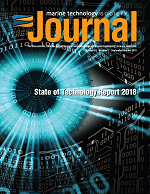
MARINE TECHNOLOGY SOCIETY JOURNAL
Fostering Dialogue in Marine Technology AdvancementsMARINE TECHNOLOGY SOCIETY JOURNAL, published by the Marine Technology Society, Inc., serves as a critical forum for advancing the field of marine engineering and oceanography. With a rich history dating back to its inception in 1969 and continuing through various converged years until 2024, this journal is recognized for its contributions to the understanding of marine technologies and their applications. It currently holds a notable Q3 ranking in both Ocean Engineering and Oceanography, as per the 2023 metrics, underscoring its significance in these domains. Although access is not open, the journal rigorously assesses and publishes high-quality research articles, technical notes, and reviews that engage a wide readership of researchers, industry professionals, and students alike. With the journal's aim to disseminate innovative findings and foster dialogue within the marine community, it promises to be an essential resource for anyone looking to explore the dynamic field of marine technology.

Journal of Ship Production and Design
Pioneering advancements in marine technology and production.Journal of Ship Production and Design is an esteemed publication dedicated to advancing the fields of shipbuilding and marine engineering. Published by the SOC Naval Architects & Marine Engineers in the United States, this journal serves as a vital platform for sharing innovative research and developments in mechanical and ocean engineering. With an ISSN of 2158-2866 and an E-ISSN of 2158-2874, the journal covers a wide spectrum of topics relevant to ship production, design methodologies, and advancements in materials and technologies used in marine applications. Although it currently operates without open access, the journal has established itself in the academic community, reflected by its rankings in Scopus and various quartiles in 2023, demonstrating its relevance and contribution to engineering disciplines. Since its inception in 2013, the Journal of Ship Production and Design has played a crucial role in disseminating knowledge, fostering collaboration, and inspiring the next generation of engineers and researchers in increasingly competitive fields.
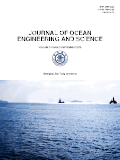
Journal of Ocean Engineering and Science
Transforming marine environments through cutting-edge research.The Journal of Ocean Engineering and Science, published by Elsevier, is a prominent academic journal dedicated to advancing the field of ocean engineering and environmental sciences. Since its inception as an Open Access journal in 2016, it has rapidly gained recognition, achieving significant impact factor ratings with notable placements in the prestigious Q1 category for Ocean Engineering and Oceanography, and Q2 for Environmental Engineering in 2023. With a remarkable ranking of #3 out of 105 in Ocean Engineering and #4 out of 145 in Oceanography according to Scopus, the journal plays a critical role in disseminating cutting-edge research and innovative solutions addressing complex challenges faced by marine environments. Operating from Amsterdam, Netherlands, the Journal of Ocean Engineering and Science invites contributions from researchers, professionals, and students worldwide, emphasizing the importance of interdisciplinary approaches in achieving sustainable maritime practices.
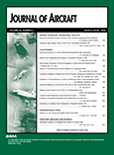
JOURNAL OF AIRCRAFT
Pioneering Research in Aircraft Engineering.JOURNAL OF AIRCRAFT, published by the American Institute of Aeronautics and Astronautics, stands at the forefront of aerospace engineering research, serving as a critical resource for researchers, professionals, and students in the field. With a proud publication history dating back to 1964 and continuing through 2024, the journal has established itself as a leading forum for innovative studies and advancements in aircraft design, technology, and utilization. Notably, it holds a prestigious Q1 ranking in Aerospace Engineering and is positioned at the 75th percentile among its peers. As a non-open access publication, it offers a subscription-based model, ensuring high-quality content disseminated to a discerning audience. The ISSN 0021-8669 and E-ISSN 1533-3868 provide easy reference for those seeking to engage with pioneering research in aviation and aircraft systems. Researchers and practitioners alike will find valuable insights and comprehensive analyses in this esteemed journal that continually shapes the development of the aerospace industry.
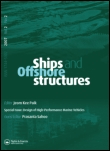
Ships and Offshore Structures
Connecting Ideas and Innovations in Ocean EngineeringShips and Offshore Structures, published by Taylor & Francis Ltd, is a premier academic journal dedicated to advancing research in the fields of mechanical and ocean engineering. With an esteemed ISSN of 1744-5302 and an E-ISSN of 1754-212X, this journal has established a strong reputation, reflected in its Q2 ranking in both the Mechanical Engineering and Ocean Engineering categories, as well as its impressive Scopus rankings. The journal provides a platform for the publication of high-quality, peer-reviewed articles that address innovative design, construction, and operational challenges faced in the maritime and offshore industries. Although the journal does not currently offer open access, its accessibility through institutional subscriptions ensures that it remains a valuable resource for researchers, professionals, and students alike. By fostering interdisciplinary dialogue and disseminating cutting-edge research, Ships and Offshore Structures plays a crucial role in shaping the future of marine technology and engineering practices on a global scale.
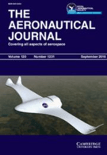
AERONAUTICAL JOURNAL
Shaping the discourse in aerospace engineering.Aeronautical Journal, published by Cambridge University Press, is a premier scholarly journal dedicated to advancing the field of aerospace engineering. With a notable impact factor, this journal holds a strong position in the academic community, ranked #53 out of 153 in the Scopus category of Aerospace Engineering, placing it in the 65th percentile. The journal has been providing a platform for groundbreaking research since its inception in 1969, and continues to be a vital resource for researchers, professionals, and students involved in aeronautics. As a Q2 journal in the 2023 Aerospace Engineering category, it offers high-quality articles that cover a range of topics within the discipline, contributing to the ongoing discourse and innovation in aerospace technologies. Although not an open-access journal, it remains accessible to a vast readership through institutional subscriptions and partnerships. The Aeronautical Journal is a crucial publication for those seeking to stay at the forefront of aerospace research and development.